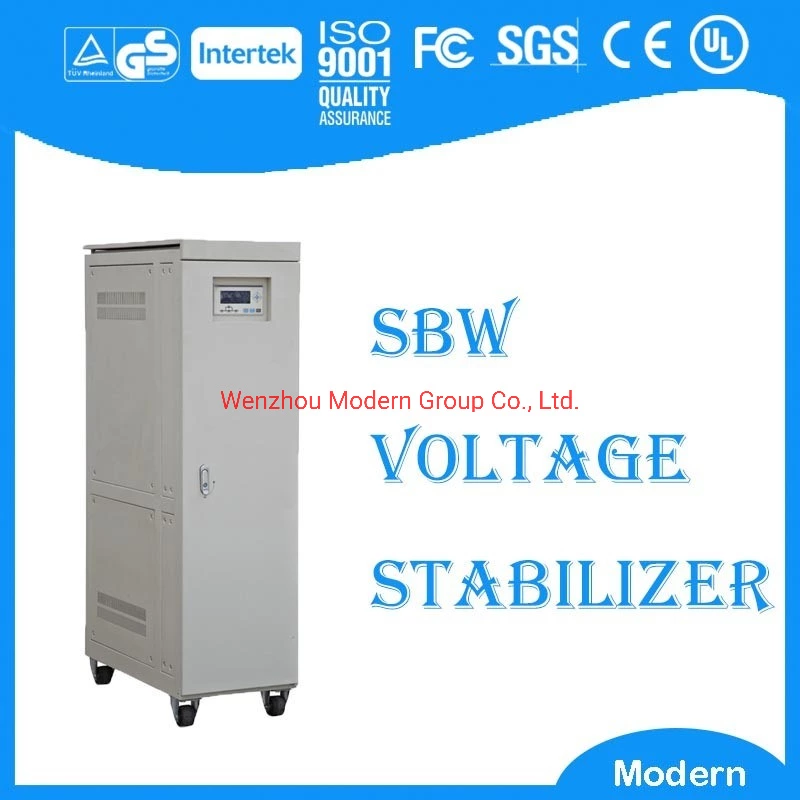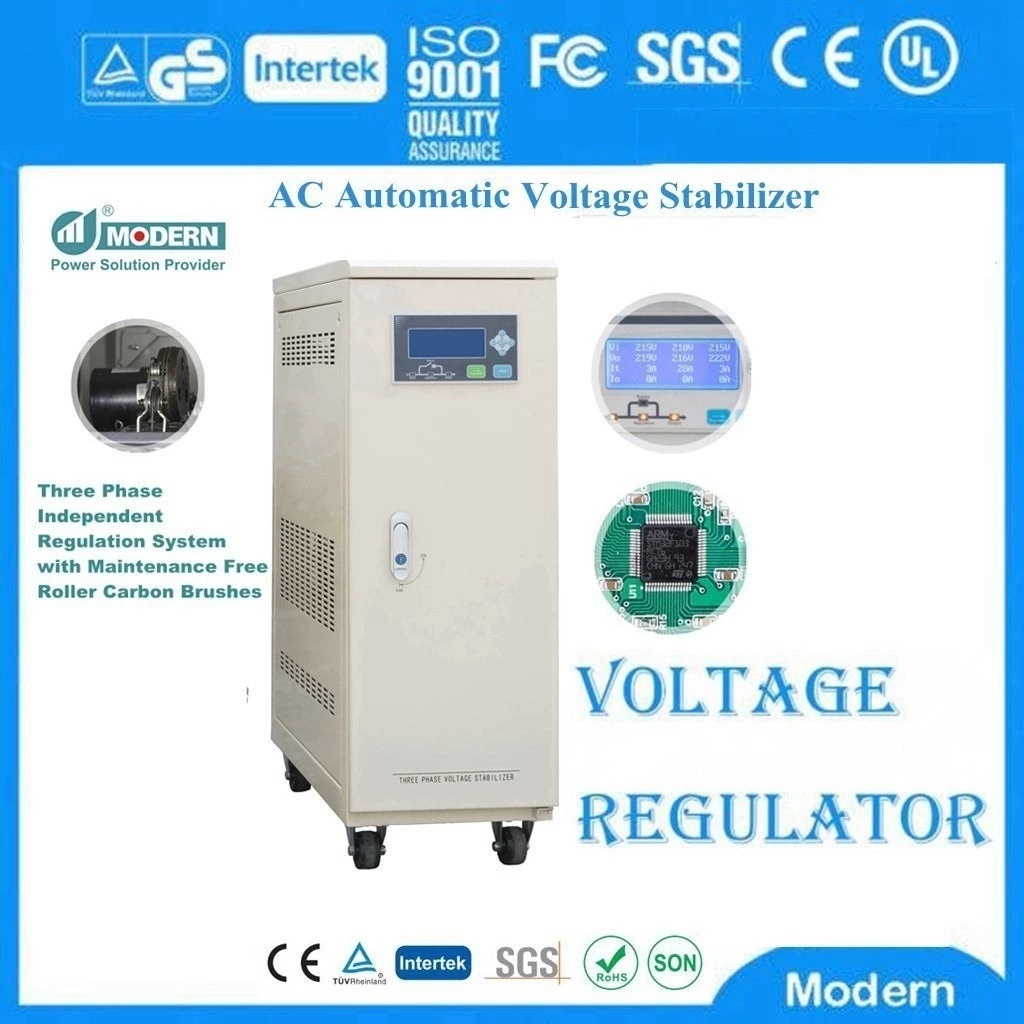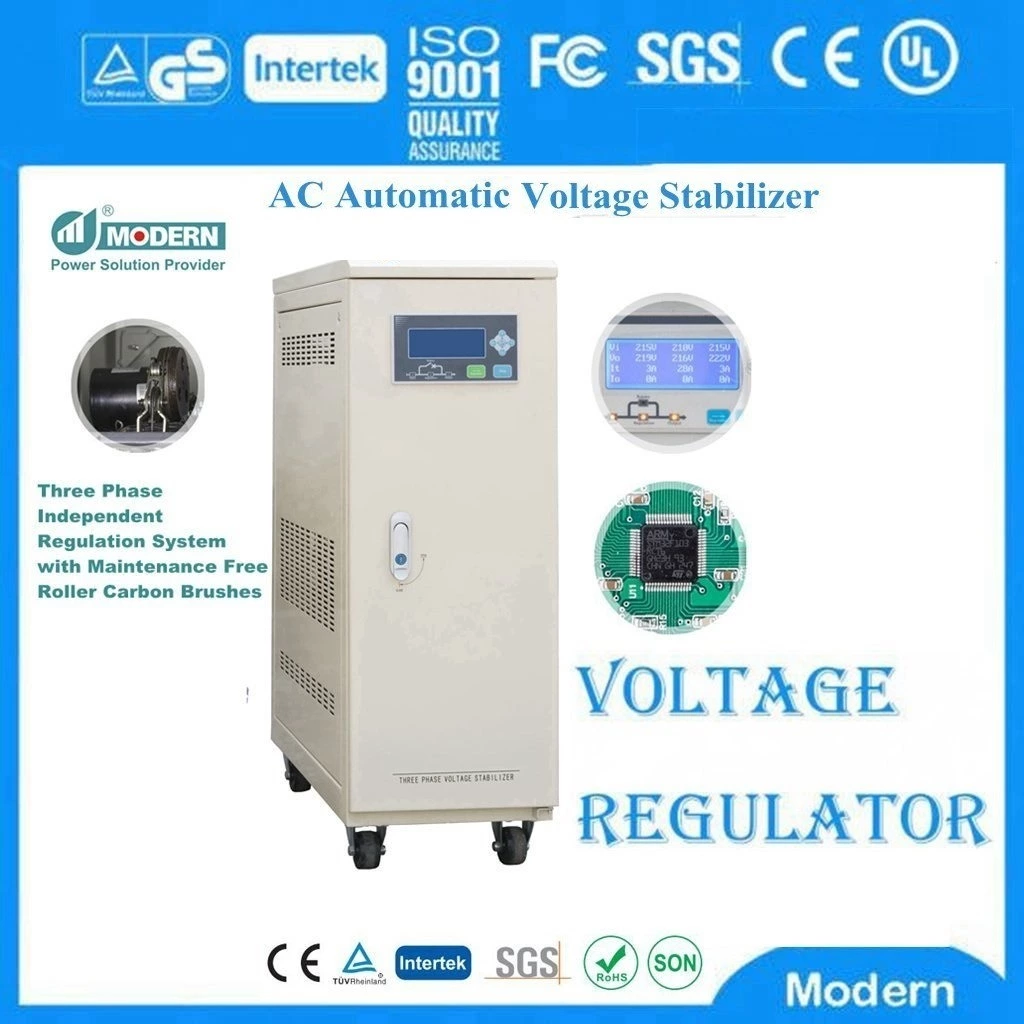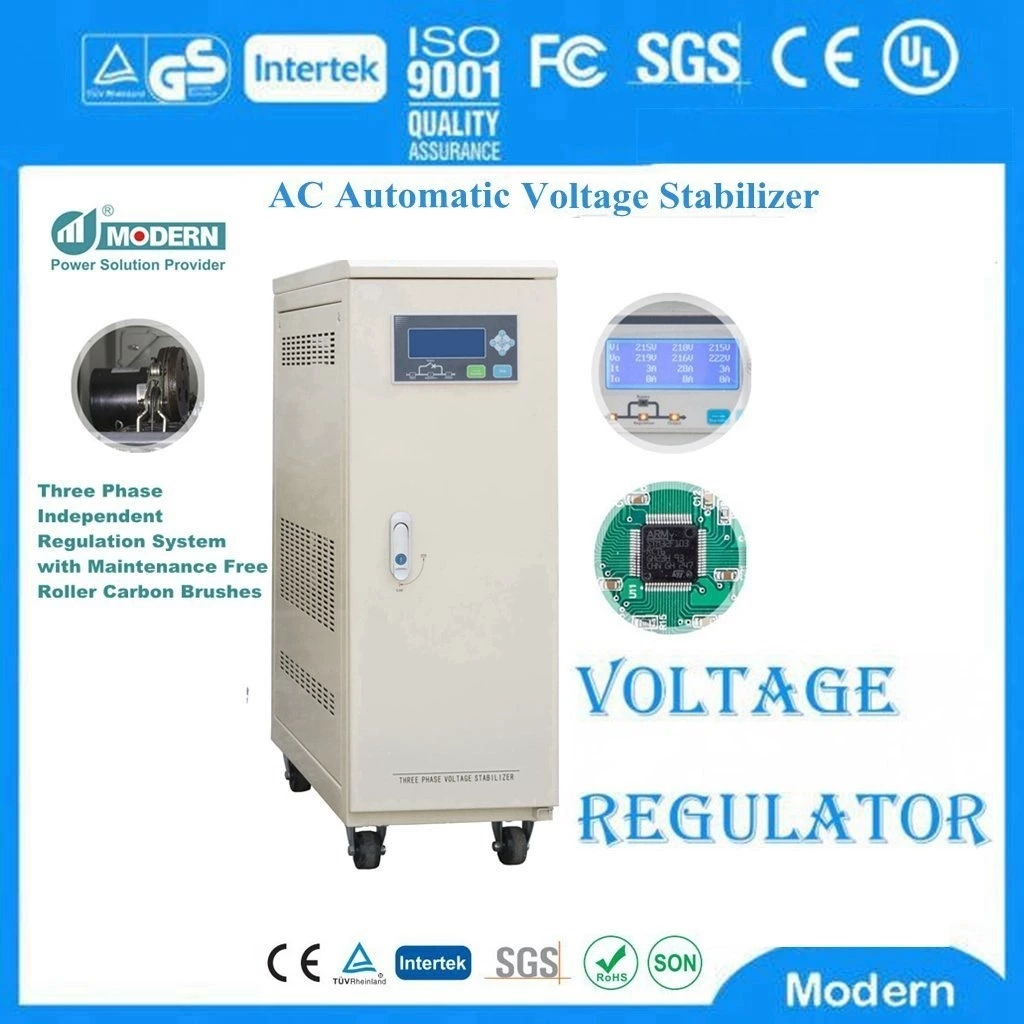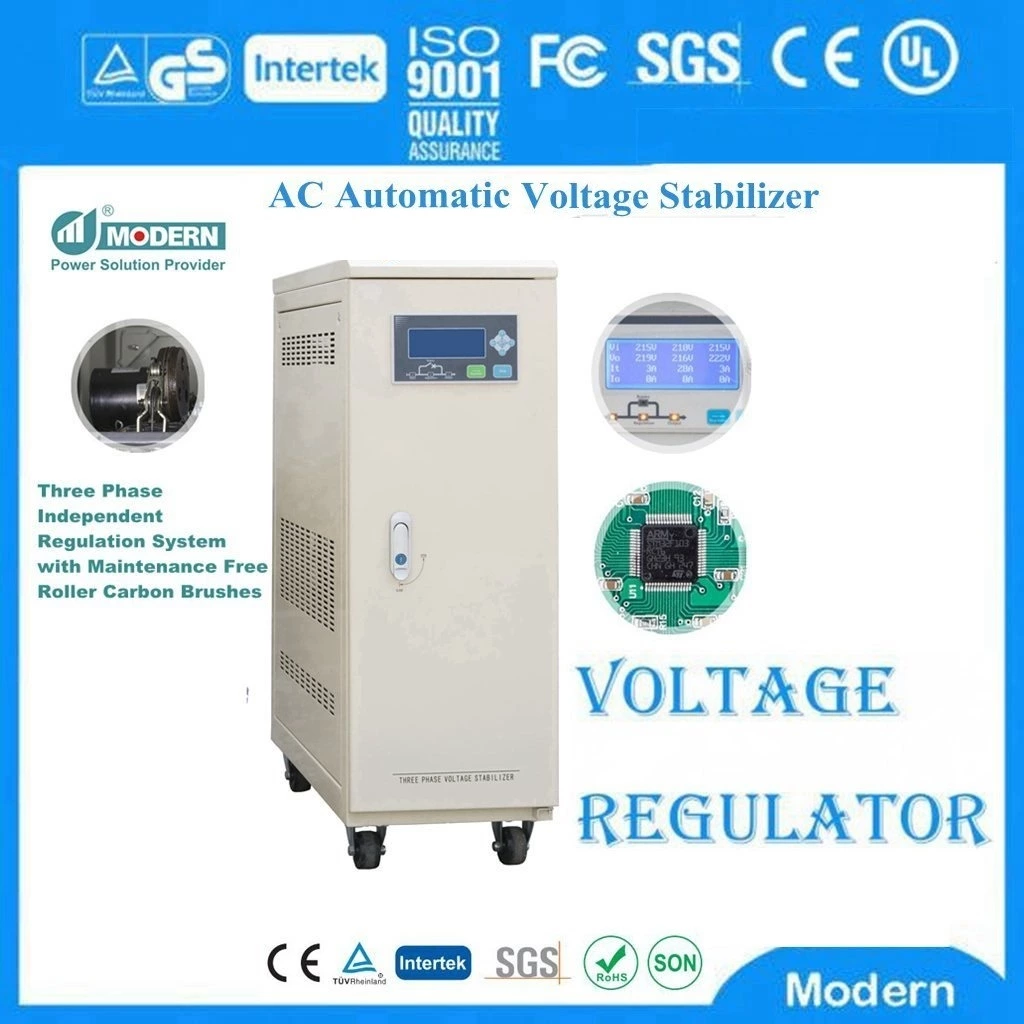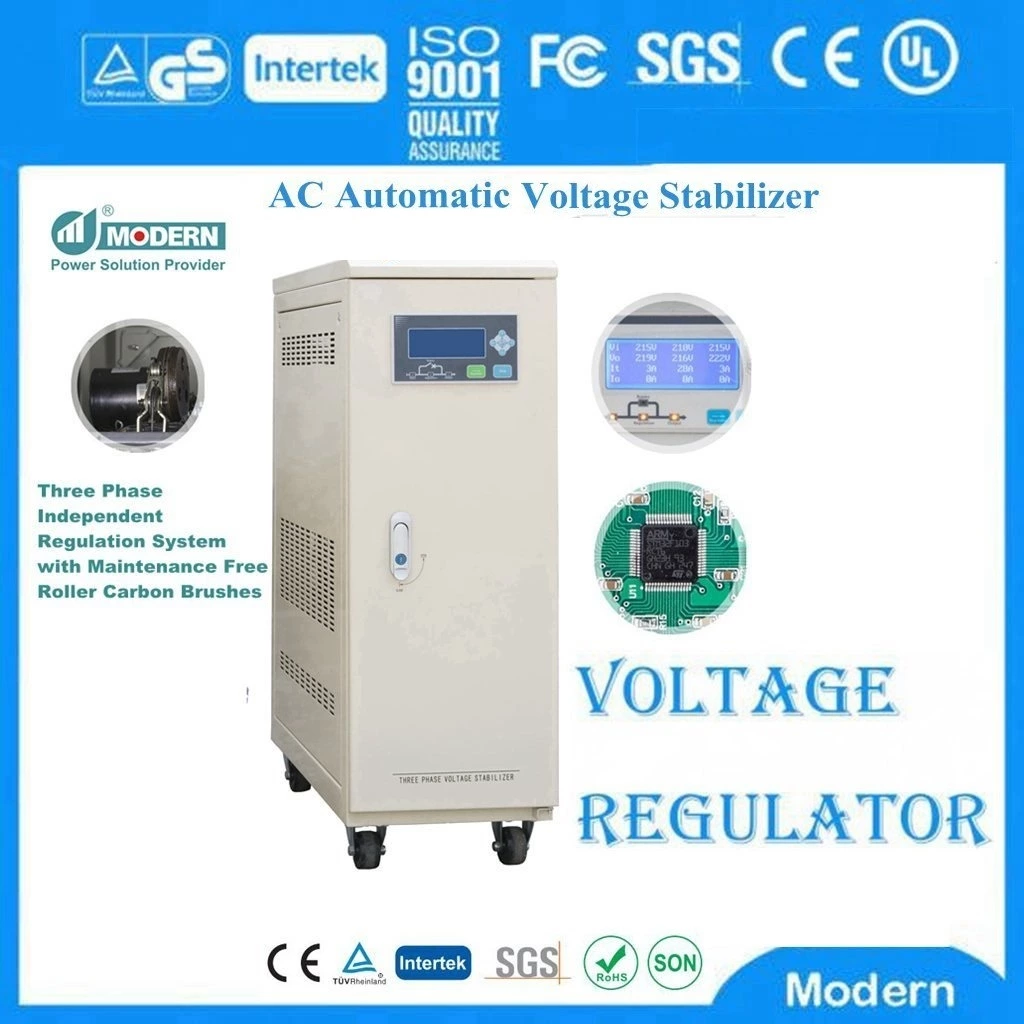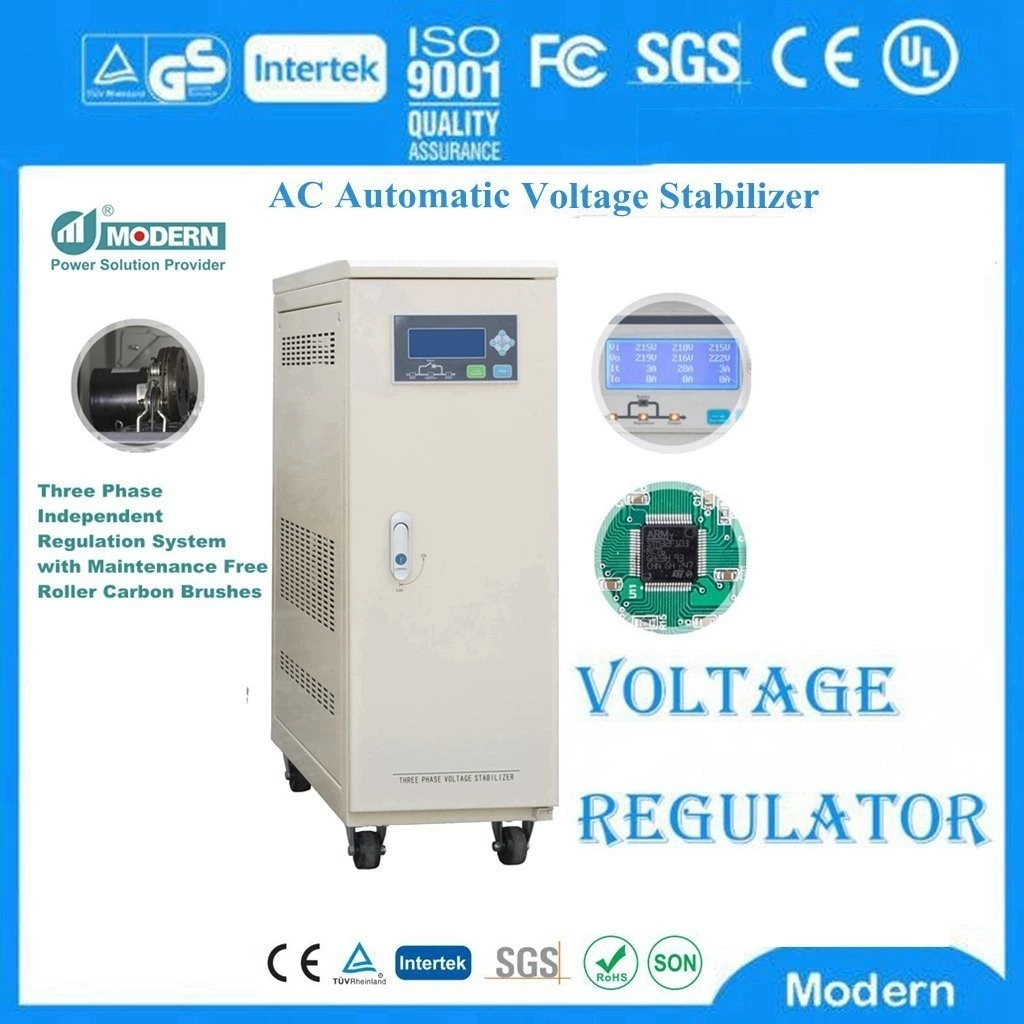Transformer Knowledge
Transformer Terms
Transformer Term Definitions
| Electrical Transformers Isolating Transformers Transmission Power Lines Transformer Voltage Transformer Phase Transformer Frequency Transformer K Factor |
Primary Voltage Secondary Voltage Harmonic Cancellation Weatherproof Epoxy Encapsulated More power transformer terms Star and Delta connection |
Transformer Term Definitions
• Electrical Transformers
Electrical Transformers are devices used to raise or lower the voltage of alternating current. For instance, power is transported over long distance in high voltage power lines and then transformers lower the voltage so that the power can be used by a business or household.
• Isolating Transformers
An Isolating Transformer is a transformer, often with symmetrical windings, which is used to decouple two circuits. An Isolation transformer allows an AC signal or power to be taken from one device and fed into another without electrically connecting the two circuits. Isolation transformers block transmission of DC signals from one circuit to the other, but allow AC signals to pass.
• Transmission Power Lines
A Transmission Line is the material medium or structure that forms all or part of a path from one place to another for directing the transmission of energy, such as electromagnetic or acoustic waves as well as electric power transmission. Components of transmission lines include wires, coaxial cables, dielectric slabs, option fibers, electric power lines, and waveguides.
• Transformer Voltage
The measure of the amount of force on a unit charge because of the surrounding charge.
• Transformer Phase
Most transformer are either single phase or three phase.
• Transformer Frequency
The transformer cannot change the frequency of the supply. If the supply is 60 hertz, the output will also be 60 hertz.
• Transformer K Factor
Some transformers are now being offered with a k-factor rating. This measure the transformer's ability to withstand the heating effects of non-sinusoidal harmonic currents produced by much of today's electronic equipment and certain electrical equipment.
• Primary Voltage
The coil winding that is directly connected to the input power.
• Secondary Voltage
The coil winding supplying the output voltage.
• Harmonic Cancellation
Harmonic cancellation is performed with harmonic canceling transformers also known as phase-shifting transformers. A harmonic canceling transformer is a relatively new power quality product for mitigating harmonic problems in electrical distribution systems. This type of transformer has patented built-in electromagnetic technology designed to remove high neutral current and the most harmful harmonics from the 3rd through 21st.
• Weatherproof
Enclosed transformers come with a weatherproof standard set by NEMA.
• Epoxy Encapsulated
A process in which a transformer or one of its components is completely sealed with epoxy or a similar material. This process is normally preferred when a unit might encounter harsh environmental conditions.
• More power transformer terms
Such as inductor, ground fault, core saturation, current transformer, faraday shield, etc
• Star and Delta connection

Delta Connection
If we call the three phase conductors L1, L2 and L3, then you connect the first magnet to L1 and L2, the second one to L2 and L3, and the third one to L3 and L1.
This type of connection is called a delta connection, because you may arrange the conductors in a delta shape (a triangle). There will be a voltage difference between each pair of phases which in itself is an alternating current. The voltage difference between each pair of phases will be larger than the voltage we defined on the previous page, in fact it will always be 1.732 times that voltage (1.732 is the square root of 3).

Star Connection
There is another way you may connect to a three phase grid, however: You may also connect one end of each of the three magnet coils to its own phase, and then connect the other end to a common junction for all three phases. This may look surprising, but consider that the sum of the three phases is always zero, and you'll realise that this is indeed possible.
Transformer Types
| Step-Up Transformers Step-Down Transformers Typical transformer Isolation Transformer Buck Boost Transformers Auto Transformers High voltage transformers Medium Voltage Transformers Low Voltage Transformers Single Phase Transformers |
Three Phase Transformers Industrial Control Transformers Pad Mounted Transformers Pole Mounted Transformers Oil Filled Transformers Dry-Type Transformers Industrial Control Transformers More Power Transformer Types |
Step-Up Transformers
A Step-Up Transformer is one whose secondary voltage is greater than its primary voltage. This kind of transformer "step up" the voltage applied to it.
How does a step Up transformer or step down transformer works: A transformer is made from two or more coils of insulated wire wound around a core made of iron. The number of times the wires are wrapped around the core ("turns") is very important and determines how the transformer changes the voltage. If the primary has fewer turns than the secondary, you have a step-up transformer that increase the voltages. When voltage is applied to one coil (frequently called the Primary or input) it magnetizes the iron core, which induces a voltage in the other coil, (frequently called the secondary or output). The turns ratio of the two sets of windings determines the amount of voltage transformation. An example of this would be 100 turns on the primary and 50 turns on the secondary, a ratio of 2 to 1. transformer is nothing more than a voltage ratio device With a step up transformer or step down transformer the voltage ratio between primary and secondary will mirror the "turn ratio" (except for single phase smaller than 1 kva which have compensated secondaries). A practical application of this 2 to 1 turns ratio would be a 480 to 240 voltage step down.
A transformer is made from two coils, one on each side of a soft iron core. Step-up transformer increase the voltage. A example if below.

There are two points to remember
Transformers only work with alternating current. Using direct current will create a magnetic field in the core but it will not be a changing magnetic field and so no voltage will be induced in the secondary coil.
Using a step up transformer to increase the voltage does not give you something for nothing. As the voltage goes up, the current goes down by the same proportion. The power equation shows that the overall power remains the same.
P=V x I Power = Voltage x Current
In reality, the power output is always less than the power input because the changing magnetic field in the core creates currents (called eddy currents) which heat the core. This heat is then lost to the environment, it is wasted energy.
Electricity is first produced at the power plants. Electricity is then sent to step-up transformers where low-voltage electricity is changed to high voltage to facilitate the transfer of power from the power plant to the customer. Voltage must be increased so that the electric current has the "push" it needs to efficiently travel long distances.
From the step-up transformer, transmission lines carry the high voltage electric current long distances through thick wires mounted on tall towers that keep the transmission lines high above the ground. Insulators made of porcelain or polymers are used to prevent the electricity from leaving the transmission lines.
High-voltage transmission lines carry the electric current to substations where the voltage is lowered so it that can be distributed locally on smaller power lines known as distribution lines. Distribution line voltage levels are typically 4 kV or 12 kV. These voltages are reduced one last time at smaller pole-top transformers to utilization voltages, typically 120 and 240 volts, to make the power safe to use in our homes.
Step-Down Transformers
A Step-down transformer is one whose secondary voltage is less than its primary voltage. The step down transformer is designed to reduce the voltage from the primary winding to the secondary winding.
This kind of transformer "step down" the voltage applied to it. They often range in voltage sizes from 0.5 kva to 500 kva.
There is many uses for step-down transformer and the larger devices are used in electric power systems, and small units in electronic devices. Industrial and residential power transformers that operate at the line frequency (60 Hz in the U.S.), may be single phase or three-phase, are designed to handle high voltages and currents. Efficient power transmission requires a step-up transformer at the power-generating station to raise voltages, with a corresponding decrease in current. Line power losses are proportional to the square of the current times the resistance of the power line, so that very high voltages and low currents are used for long-distance transmission lines to reduce losses. At the receiving end, step-down transformers reduce the voltage, and increase the current, to the residential or industrial voltage levels, usually 115 to 600 V.
In electronic equipment, transformers with capacities in the order of 1 kw are largely used ahead of a rectifier, which in turn supplies direct current (DC) to the equipment. Such electronic power transformers are usually made of stacks of steel alloy sheets, called laminations, on which copper wire coils are wound. Transformers in the 1-to100-W power level are used principally as step-down transformers to couple electronic circuits to loudspeakers in radios, television sets, and high-fidelity equipment. Known as audio transformers, these devices use only a small fraction of their power rating to deliver program material in the audible ranges, with minimum distortion. The transformers are judged on their ability to reproduce sound-wave frequencies (from 20 Hz to 25 kHz) with minimal distortion over the full sound power level.
How does a step-down transformer work?
A transformer is a electrical device with one winding of wire placed close to one or more other windings, used to couple two or more alternating-current circuits together by employing the induction between the windings. A transformer in which the secondary voltage is higher than the primary is call a step-up transformer, if the secondary voltage is less than the primary, then its a step-down transformer. The product of current times voltage is constant in each set of windings, so that in a step-up transformer, the voltage increase in the secondary is accompanied by a corresponding decrease in the current.
Factors in choosing a step-down transformer:
Transformers must be efficient and should dissipate as little power as possible in the form of heat during the transformation process. Efficiencies are normally above 99 percent and are obtained by using special steel alloys to couple the induced magnetic fields between the primary and secondary windings. To increase transformer efficiency and reducing heat one of the most important considerations is choosing the metal type of the windings. Copper windings is more efficient than aluminum and other winding metal choices. Transformers with copper windings cost more initially, but can save on electrical cost and maintenance over time and more than makes up for the initial cost. The dissipation of even 0.5 percent on the power transmitted in a large transformer generates a large amount of heat, which requires special cooling. Typical power transformers are installed in sealed containers that have oil or another substance circulating through the windings to transfer the heat to external radiator-like surfaces, where it can be discharged to the surroundings.
Information on a typical step-down transformer:
A transformer is a device for stepping-up or stepping-down electric signal. Without efficient transformers, the transmission and distribution of ac electric power over long distances would be impossible.
Typical transformer
There are two circuits; the primary circuit, and the secondary circuit. There is no direct electrical connection between the two circuits, but each circuit contains a winding which links it inductively to the other circuit. In transformers, the two windings are wound onto the same iron core. The purpose of the iron core is to channel the magnetic flux generated by the current flowing around the primary windings, so that as much of it as possible also links the secondary winding. The common magnetic flux linking the two windings is conventionally denoted in circuit diagrams by a number of parallel straight lines drawn between the windings. In other words, the ratio of the peak voltages and peak currents in the primary and secondary circuits is determined by a the ratio of the number of turns in the primary and secondary windings; this latter ratio is usually called the turns ratio of the transformer. If the secondary winding contains more turns than the primary winding then the peak voltage in the secondary circuit exceeds that in the primary circuit. This type of transformer is called a step-up transformer, because it step us the voltage of an ac signal. Note that the peak current in the secondary circuit is less than the peak current in the primary circuit in a step-up transformer (as must be the case if energy is to be conserved). Thus, a step-up transformer actually steps down the current. Likewise, if the secondary winding contains less turns than the primary winding then the peak voltage in the secondary circuit is less than that in the primary circuit. This type of transformer is called a step-down transformer. Note that a step-down transformer actually steps up the current (i.e., the peak current in the secondary circuit exceeds that in the primary circuit).
The use of step-up and step-down transformers in power distribution stations:
Electricity is generated in power stations at a fairly low peak voltage (sometime like 440V), and is consumed at a peak voltage of 110V to 220V for households and businesses in the U.S. AC electricity is transmitted from the power station to the location where it is consumed at a very high peak voltage (typically 50,000V). As soon as a ac signal comes out of the generator in a power station it is fed into a step-up transformer and fed into a high tension transmission line, and transports the electricity over many miles, and once the electricity has reached its point of consumption, it is fed through a series of step-down transformers until its peak voltage is often reduced down to 110V.
If Electricity is both generated and consumed at low peak voltages, why go to the trouble of stepping up the peak voltage to a very high value at the power station and then stepping down the voltage again once the electricity has reached its point of consummation? Why not generate, transmit, and distribute the electricity at a voltage of 110V? Consider an electric power line which transmits a peak electric power between a power station and a city. We can think of the number of consumers in the city and the nature of the electrical devices which they operate, as essentially a fixed number. Suppose that the peak voltage and peak current of the ac signal are transmitted along the line. We can think of these numbers as being variable, since we can change them using a transformer. However, since, the product of the peak voltage and the peak current must remain constant. The resistance of the line causes power loses that are greater at lower voltages over distance. The peak rate at which electrical energy is lost due to ohmic heating in the line is high.
If the power transmitted down the line is a fixed quantity, as is the resistance of the line, then the power lost in the line due to ohmic heating varies like the inverse square of the peak voltage in the line. It turns out that even at very high voltages, such as 50,000 V, the ohmic power losses in transmission lines which run over ten kilometers can amount to up to 20% of the transmitted power. It can readily be appreciated that if an attempt were made to transmit ac electric power at a peak voltage of 110V then the ohmic losses would be so severe that virtually none of the power would reach it destination. It is only possible to generate electric power at a central location, transmit it over large distances, and then distribute it at its point of consumption, if the transmission is performed at a very high peak voltage (the higher, the better). Transformers play a vital role in this process because they allow us to step-up and step-down the voltage of a ac electric signal very efficiently. A well designed transformer typically has a power loss which is only a few percent of the total power flowing through it.
Isolation Transformer
Isolation Transformers have primary and secondary windings that are physically separated from each other. Sometimes isolation transformers are referred to as "insulated".
This is because the windings are insulated from each other. In an isolation transformer the output winding will be isolated, or floating from earth ground unless bonded at the time of installation. Secondary neutral to ground bonding virtually eliminates common mode noise, providing an isolated neutral-ground reference for sensitive equipment and an inexpensive alternative to the installation of dedicated circuits and site electrical upgrades.
An isolation transformer allows an AC signal or power to be taken from one device and fed into another without electrically connecting the two circuits. Isolation transformers block transmission of DC signals from one circuit to the other, but allow AC signals to pass. They also block interference caused by ground loops. Isolation transformers with electrostatic shields are used for power supplies for sensitive equipment such as computers or laboratory instruments. Isolation transformers are different from auto transformers in which the primary and secondary share a common winding.
Isolation transformers can accomplish a number of tasks:
The primary and secondary windings may be constructed to step-up or step-down the output voltage. For example, the transformer can accomplish voltage matching between a 120 V load and an electrical system that measures 208 V.
Isolation transformers constructed with Faraday shields, will improve power quality by attenuating higher frequency noise currents.
Isolation transformers provide better impendence matching of a critical load to an electrical circuit . Internal low-impedance isolation transformer component offers 100% isolation from the input AC line.
Hospital Grade Isolation transformers is ideal for the protection of sensitive electronic equipment in patient-care areas.
Isolation transformer with Faraday shield reduces the cumulative leakage current of the Isolator and connected equipment to levels below 300 microamps.
Surge suppression components placed at the line input and output combined with full line isolation offers continuous filtering of a full range of power line noise in all modes. Active transformer filtering offers continuous common-mode noise rejection with no wearable parts, uniquely able to reduce surges in the worst of power environments to harmless levels.
isolation transformer provides a "code-legal" method of re-bonding the electrical system safety ground to the neutral conductor on the transformer secondary. Doing so eliminates neutral-to-ground voltage and noise, which is major cause of reliability problems for microprocessor-based electronics.
In electronics testing, troubleshooting and servicing, an isolation transformer is a 1:1 power transformer which is used as a safety precaution. Since the neutral wire of an outlet is directly connected to ground, grounded objects near the device under test (desk, lamp, concrete floor, oscilloscope ground lead, etc.) may be at a hazardous potential difference with respect to that device. By using an isolation transformer, the bonding is eliminated, and the shock hazard is entirely contained within the device.
Isolation transformers are commonly designed with careful attention to capacitive coupling between the two windings. This is necessary because excessive capacitance could also couple AC current from the primary to the secondary. A grounded shield is commonly interposed between the primary and the secondary. Any remaining capacitive coupling between the secondary and ground simply causes the secondary to become balanced about the ground potential.
All transformers provide isolation. They are constructed with a primary and secondary winding closely wrapped around the same ferrous core. Commercial transformers incorporate a single Faraday shield between the primary and secondary windings to divert noise, which would normally be electrically coupled between the primary and secondary windings to ground . The method through which this electrical coupling of noise occurs is the capacitance between the coils of the primary and secondary windings of the transformer, which does not include a Faraday shield. This same capacitance limits the upper frequency band pass of the transformer in the same manner as the mutual and self-inductances of the device determine its low frequency cutoff. As the frequency of the exciting currents increases, the reactance caused by the capacitance between the windings, tends to shunt these currents, thereby limiting high frequency performance.
The single Faraday shield controls all manner of evils which could be attributed to the electric coupling of noise through a transformer. However, the problem with a single shield arises when it is bonded to the ground of either the primary or secondary side of the transformer. The enclosure of a Faraday shield between the primary and secondary windings eliminates inter-capacitance, but it also establishes two new capacitances between the shield and both windings. These two capabilities allow high frequency currents to flow in the grounding systems of both the primary and secondary. Bonding the transformer shield to either the primary or secondary ground establishes current paths for high frequency noise in the reference conductor of the circuit to be isolated. The particular choice of ground for connection of the shield only provides selection of the quieter of the primary and secondary circuits. In many applications, this current path defeats any isolating effect, which a transformer might provide.
An isolation transformer is designed to address the problems associated with referencing its internal shields to ground. It is constructed with two isolated Faraday shields between the primary and secondary windings. When properly installed, the shield, which is closest to the primary winding, is connected to the common power supply ground and the shield closest to the secondary winding is connected to the shield of the circuit to be isolated. The use of two shields in the construction of the isolation transformer diverts high frequency noise, which would normally be coupled across the transformer to the grounds of the circuit in which they occur. The two shields provide more effective isolation of the primary and secondary circuits by also isolating their grounds. The isolation transformer adds a third capacitance between the two Faraday shields, which may allow coupling of high frequency noise between the system grounds. However, increasing the separation between the two Faraday shields normally minimizes this third capacitance. Additionally, the dielectric effect of the shields plus the increased separation of the windings significantly reduce the inter-capacitance between the windings.
Generally, a conductive foil completely enclosing the windings will provide a ground path for primary circuit noise and has the advantage that a very much smaller capacitance exists between primary and secondary coils than in the case of a simple Faraday shield. The Faraday shield is simply a grounded single turn of conductive nonferrous foil placed between coils to divert primary noise to ground. The enclosing shield, if grounded properly, will not re-radiate the noise signal, and will provide effective electromagnetic noise reduction. Typically, according to Topaz at a distance of 18 inches from a transformer's geometric center, the field strength will be less than 0.1 gauss, and will roughly follow inverse cube laws. Since inter-winding capacitances are the primary path by which significant power line and transient related noise couples to the system, more information is needed to describe what occurs. During the time power is being transferred between transformer windings, noise potentials between the primary circuits and ground is similarly coupled to the secondary through both capacitive and resistive paths. This noise appears in three forms normally in a transformer circuit: common-mode, transverse mode, and electromagnetic.
Common - Mode Noise
This noise appears between both sides of a power line and ground. Since this noise is referenced to the power system ground, the most obvious method of eliminating this noise is by grounding the transformer center tap to the system ground via the lowest impedance path possible. Internal transformer designs, which separate the coils to reduce capacitive coupling, have some advantage, but it also increases leakage inductance and reduces the power transfer.
Transverse - Mode
Transverse-mode noise is much more difficult to eliminate than common-mode noise. The key here is to differentiate between power and noise, and then reduce the noise.
Noise and power are separated by the difference in their frequencies. The most effective transformer would be a design exactly opposite to a audio transformer. The purpose is to transfer the power required by the load at the fundamental power frequency and to eliminate all higher and lower frequencies. Sub-harmonic frequencies are attenuated by operating the transformer at relatively high flux density, which is effective in reducing or eliminating them. Above the fundamental frequency, noise is reduced by introducing as much leakage inductance as possible, consistent with good power transfer to the secondary.
Transverse-mode noise appears as a voltage across both the primary and secondary windings of an isolation transformer. It occurs when a common-mode noise signal causes current to flow in the primary winding (or secondary winding), and from there to ground via capacitance to a grounded shield. Common-mode noise can also be transformed into 'transverse-mode noise, and thereby, through magnetic coupling, contaminate the secondary of an isolation transformer. Normally, by the proper selection of core loss verses primary winding inductance, a well-designed isolation transformer will eliminate the majority of this type of noise. Here again, grounding the transformer shield to the lowest impedance path available, will result in noise currents using this return path rather than some other higher impedance path to the noise source ground.
Electromagnetic noise does not constitute a major problem in most applications, but is sometimes critical in some recording or digital data systems, and in making electromagnetic interference measurements.
Box Level Applications
Isolation transformers are often used to protect high gain circuits, or prevent noisy ground paths in instrumentation. Shielding at the instrument level is difficult and often ineffective. Since most commercial instrumentation has single shielding in its power transformer, designers sometimes hope that by adding a isolation transformer ground problems can be eliminated. This approach often results in no benefits to the system unless all other ground paths in the instrument can be totally isolated. An isolation transformer is not a substitute for the proper shielding or grounding of individual instruments. . The amount of ground isolation provided by the transformer at the box level is limited by the use of a single chassis shield enclosing the box. High frequency noise currents generated by the box circuitry can be coupled onto the circuit reference conductors through the connection of both transformers' shields to the circuit reference. Additionally, any potential difference between the power system ground at the isolation transformer primary input and the power system ground at the equipment and the power system ground at the equipment chassis will cause currents to flow in the reference conductor of circuitry.
The most effective application of isolation transformers is with racks of equipment. A rack acts as an outer shield for internal instruments, while serving as the zero-signal reference for system output signals. Isolation transformers are used to control shield currents, and to break up the mutual capacitance between rack instrumentation and an unknown power ground.
The main benefit of using an isolation transformer with a rack of equipment is the enhanced control of currents in the equipment shields. Any potential differences between the utility power ground and the rack's ground will cause currents to flow in the loop. The isolation transformer allows these "ground" currents to be directed through a portion of the rack's shielding which will not effect the operation of sensitive circuits and completely isolates these currents from the internal equipment reference conductors.
Room Level Applications
It is often necessary to isolate EMC test enclosures from noisy building grounds. Not only can isolation transformers be used to effectively decouple building power, but also since they also act as tuned circuits; they reduce the differential noise from external equipment, which reaches your screen room. While it is recognized as a second isolation transformer inside the test room will greatly reduce power line ambient, this section will only consider using transformers on the power lines to a typical screen room.
As with any transformer, isolation transformers radiate magnetic fields. Physically locating the transformer adjacent to, or connected to, a screen room may increase rather than decrease ambient noise. Since the physical case of a transformer, as well as the primary winding shield, are normally connected to the third-wire power ground of the supplied power, the secondary winding shield must be isolated from the transformer case and connected only to the conduit shield going to the shielded room to achieve proper ground isolation. The conduit acts as an RF shield for the room's power and completes the connection between the shielded room and the secondary winding shield in the transformer.
If the transformer is three phase and supplies more than one room, the best application for isolation between rooms is to use only one phase for each room, with a limit of three rooms per transformer. With this approach, power line filters will effectively isolate the room while providing practical noise attenuation.
Proper transformer design, wiring, and, above all, grounding, are the only effective means of reducing the three types of noise problems. Grounding should be controlled and use the lowest impedance path possible (i.e., bonding) to the central reference ground system to insure maximum attenuation of noise sources. To achieve the maximum protection from a transformer, not only must it be applied properly, but also the transformer should be one specially designed for isolation usage.
Three Phase Isolation Transformers
Three phase Isolation transformers are used for many applications ranging from grain dryer, saw mills, conveyer belt systems, refrigeration and air conditioning. Three phase have 3 primary and 3 secondary windings that are physically separated from each other. Each of these windings are insulated from each other. The output windings will be isolated, or floating from earth ground unless bonded at the time of installation .
The Shielded three phase isolation transformers have all the feature of the standard 3 phase plus they also incorporate a full metallic shield (usually copper or aluminum) between the 3 phase primary and 3 phase secondary windings. This electrostatic shield or Faraday Shield, is connected to earth ground and performs two functions:
Its attenuates (filters) voltage transients (voltage spikes). These shielded 3 phase isolation transformers have an attenuation ratio of 100 to 1.
It filters common mode noise, Attenuation of approximately 30 decibels. The shield three phase isolation transformer is preferred over the standard three phase isolation transformer because it provides protection to sensitive and critical equipment. When more that one shielded 3 phase isolation transformer is used between the source and the load, it is referred to as a " cascading" and greatly improves power quality.
Buck Boost Transformers
Buck Boost Transformers are small, single phase, transformers designed to reduce (buck) or raise (boost) line voltage from 5 to 20%.
The most common example is boosting 208 volts to 230 volts. usually to operate a 230 volt motor such as an air-conditioner compressor, from a 208 volt supply line. They have a dual voltage primary and a dual voltage secondary.
Buck-boosts are a standard type of single phase distribution transformers, with primary voltages of 120, 240, or 480 volts and secondary typically of 12, 16, 24, 32 or 48 volts. They are available in sizes usually from 50 volt amperes to 10 kilo-volt amperes.
A buck boost transformer is the ideal solution for changing line voltage by small amounts. The major advantages are their lost cost, compact size and light weight. They are also more efficient and cost less than equivalent isolation transformers. When connected as an autotransformer, they can handle loads up to 20 times the name plate rating.
When a buck boost transformer has the primary and secondary windings connected, it becomes an autotransformer. Now only the secondary windings are transforming voltage and current. The majority of the KVA load passes directly from the supply to the load. This is why they can supply a load with a larger KVA rating than the nameplate indicates.
They are ideal for low voltage lighting control applications. They are designed to supply power to low voltage lighting circuits, control panels or other systems requiring 12, 16, 24, 32 or 48 volts. They are also suited for low voltage landscape lighting. They are UL listed for outdoor service and their compact size makes them the perfect solution for providing power to accent lighting application .
There are two basic types of buck boost transformers, self adjusting (active) or passive designs. The active types monitor incoming voltages and will adjust the outgoing voltage to be within an acceptable range. This is typically between 115 VAC and 225 VAC for computer UPS systems. The system will either lower or boost voltage if it senses a variance in the incoming voltage.
Passive transformers are used for larger equipment where the amount is fixed. This is commonly used when someone wants to use a piece of equipment that is made for European power (220VAC to 230VAC) in the United States, which has both 208V and 240V service available.
The passive transformers are rated in volt-amperes and are rated for a percent of voltage drop or rise. For example, a buck boost transformer rated at 10% rise at 208VAC will raise incoming voltage of 210VAC to 231VAC. A rating of 5% drop at 240VAC will yield the result of 233VAC if the actual incoming voltage is 245VAC. The ratings of 208VAC for business class three phase power, and 240VAC for residential class electrical power are approximate, and will vary by several volts depending on the location and even the time of day and local demand.
Buck Boost transformers only adjust the voltage, not the frequency, or cycles of the electricity, so you can't use it to adjust equipment that requires 50Hz in the US. All US power plants use a 60Hz systems. Some equipment is designed to run at 50Hz or 60Hz, and would work fine.
Most passive transformers come semi-wired, where you complete the last internal connections to have the unit perform the amount of buck or boost needed. They have multiple taps on both the primary and secondary coils to achieve this flexibility. They are designed for hard wired installations (no Plugs) and allow the same transformer to be used in several different applications. The same transformer can be rewired to raise or lower by 5%, 10%, or 15% for either 208VAC or 240VAC applications, depending on the final wiring done by the electrician.
In the tanning industry (and for use in other industries) there are new fixed transformers that cost about the same but are configured differently. They are already prewired, so you must purchase them with the exact amount of buck or boost you need for your application. Rather than being hard wired units, they have plugs and receptacles making installation very quick and easy. This eliminates the need for an electrician if you can determine your exact incoming voltage. To further make them easier to use, they offer rating in amps rather than volt amps, which makes it easier to match up the right transformer for the task. These are used almost exclusively in light to moderate applications that require 240VAC 40 amp or less.
Not all 240V equipment needs a transformer to buck or boost the voltage. These types of transformers are used when a piece of electrical equipment has an electrical requirement that is slightly out of tolerance with the incoming power supply. This is most common when using 240V equipment in a business with 208V service or vice versa. It is also common for electronics that are made in a different country than where they are being used.
Often equipment will be rated with a voltage range, such as 220VAC to 230VAC, requiring a buck boost transformer if the incoming power is not within the range. It is important that you use a buck boost transformers that is rated equal to, or greater than the rated load of the equipment, or you can damage the transformer and the equipment.
If a piece of equipment needs a buck boost transformer but one is not used, it can cause damage to the equipment. Running the equipment at a voltage that is lower than the rated amount can cause the amperage load to rise, in order to meet the total wattage requirement of the equipment. This can result in damage, including melting of wires or parts. Running at a voltage too high can cause other types of damage. The type of damage that can happen depends on the type of equipment and it sensitivity to improper voltages, but in most circumstances, it will at least greatly reduce the service life of the equipment and make it more prone to failure. Buck-Boost transformers are an economical way to correct this potentially very serious problem. Anytime a line voltage change in the 5-20% range is required, a buck-boost transformer should be considered as your first line of defense.
When the amount of rise or drop in the incoming voltage is more than 15% to 20% then this is usually out of the boundaries of what a buck boost transformer is designed for, and a line transformer is required. Line transformers are basically the same, but with different tap points to provide grater rise or drop in voltage, such as 240VAC to 120VAC.
Application Use of Buck-Boost Transformer:
• A typical application is 120 volts in, 12 volts out for low voltage lighting or control circuitry. In most applications, this low voltage transformer is field connected as an auto transformer.
• Low supply voltage exists because equipment is installed at the end of bus system.
• When the supply system is operating at or over its design capacity.
• Where overall consumer demand may be so high the utility cuts back the supply voltage to the consumer causing a "brownout".
These transformers provide tremendous capacity and flexibility in KVA sizes and input/output voltage combinations. Basically you get can get 75 different transformers all in one convenient packaging.
Most Common Ask Question About Buck-Boost Transformers
1. How does a buck-boost transformer differ from an insulating transformer?
A Buck-Boost transformer is an insulating type transformer when it is shipped from the factory. When it is connected at the job site, a lead wire on the primary is connected to a lead wire on the secondary-thereby changing the transformer's characteristics to those of an autotransformer. The primary and secondary windings are no longer "insulated" and secondary windings are no longer "insulated" and its KVA Capacity is greatly increased.
2. What the different between a buck-boost transformer and an autotransformer?
When a buck-boost transformer primary lead wire and secondary lead wire are connected together electrically, in a recommended voltage bucking or boosting connection, the transformer is an autotransformer. However, if the interconnection between the primary and secondary winding is not made, then the unit is an insulating type transformer.
3. Why do Buck-Boost transformers have 4 windings?
To make them versatile. A four winding has 2 primary and 2 secondary windings and can be connected eight different ways to provide a multitude of voltage and KVA outputs.
4. Will a buck-boost transformer stabilize voltage?
NO, the output voltage is a function of the input voltage. If the input voltage varies, then the output voltage will also vary by the same percentage.
5. Are there any restrictions on the type of load that can be operated from a buck-boost Transformers?
There are no restrictions.
6. Why can a buck-boost transformer operate a KVA load many times larger than the KVA rating on its nameplate?
The transformer has been auto-connected in such a way that the 22V secondary voltage is added to the 208V primary voltage, it produces 230V output.
7. Can buck-boost transformers be used on motor loads?
Yes, either single or three phase.
8. Can buck-boost transformers be used on three-phase systems as well as single-phase systems?
Yes, a single unit is used to buck or boost single phase voltage. Two or three units are used to buck or boost three phase voltage. The number of units to be used in a three-phase installation depends on the number of wires in the supply line. If the three-phase supply is 4 wire Y, use three buck-boost transformers. If the 3-phase supply is 3 wire Y (neutral not available) use two buck-boost transformers.
9. Should buck-boost transformers be used to develop a three-phase 4 wire Y circuit from a three-phase 3 wire delta circuit?
No, a three phase wye buck-boost transformer connection should be used only on a 4 wire source of supply. A delta to wye connection does not provide adequate current capacity to accommodate unbalanced currents flowing in the neutral wire of the 3 wire circuit.
10. Why are buck-boost transformers shipped from the factory as insulating transformers and not pre-connected at the factory?
A four winding buck-boost transformer can be connected eight different ways to provide a multitude of voltage and KVA output combinations. The proper transformer connection depends on the user's supply voltage, load voltage and load KVA. It is more feasible for the manufacturer to ship the unit as an insulating transformer and allow the user to connect it on the job site in accordance with the available supply voltage and requirements of his load.
11. Are buck-boost transformers as quiet as standard isolation transformers?
Yes, the isolation transformer would have to be physically larger than the buck-boost transformers, and smaller transformers are quieter than larger one.
12. How does the cost of a buck-boost transformer compare to that of insulating transformer - both capable of handling the same load?
The dollar savings are generally greater than 75% compared to the use of an insulating type distribution transformer for the same application.
13. What is the life expectancy of a buck-boost transformer?
It is the same as the life expectancy of other dry-type transformers.
You should have the following information before selecting a buck-boost transformers:
• Line voltage - The voltage that you want to decrease or increase. This can be found by measuring the supply line voltage with a voltmeter.
• Load Voltage - The voltage at which your equipment is designed to operate. This is listed on the nameplate of the equipment.
• Load KVA or Load Amps - You do not need to know both- one or the other is sufficient for selection purposes.This is usually found on the nameplate of the equipment.
• Frequency - The supply line frequency must be the same as the equipment to be operated - either single or three phase.
Auto Transformers
Auto Transformer Applications
Auto-Transformers are primarily used to either step up or step down single or three phase line voltages to desired levels.
Auto Transformer Construction
Construction is characterized by a single copper wire coil common to both the primary and secondary circuits, wound around a silicone steel core. While theoretically separate parts of the winding can be used for input and output, in practice the higher voltage will be connected to the ends of the winding, and the lower voltage from one end to a tap. For example, a transformer with a tap at the center of the winding can be used with 230 volts across the entire winding, and 115 volt equipment, or reversed to drive 230 volts equipment from 115 volts. As the same winding is used for input and output, the flux in the core is partially cancelled, and a smaller core can be used. For voltage ratios not exceeding about 3:1, auto transformer is cheaper, lighter, smaller and more efficient than a true (two-winding) transformer of the same rating.
By exposing part of the winding coils and making the secondary connection through a sliding brush, an auto transformer with a near-continuously variable turns ratio can be obtained, allowing for very small increments of voltage.
Auto Transformers vs. Isolation Transformers
Physically smaller and more economical to purchase, the auto-transformer can be an attractive alternative to an equivalently rated isolation transformer, under the correct conditions.
The principle difference between an auto-transformer and an isolation transformer is the separation of the secondary windings. Because the auto-transformer uses a single coil winding for both the primary input and the secondary output, any electrical noise, voltage spikes, sags or any other undesirable condition will pass through unchecked. Equipment susceptible to damage by poor line conditions will not be protected. And noise and harmonics generated by components on the secondary side will be allowed to transmit onto the main supply line. Because the auto-transformer can transmit line disturbances directly, local building codes may prohibit their use in certain areas. Auto-Transformers also should not be used in closed delta connections as they will introduce into the circuit a phase shift which causes higher power use.
Auto-Transformers are best used in applications where the line voltage needs to be matched to a protected piece of equipment. A good example would be a machine tool which was manufactured in Europe and designed to operate on 400V. The drives and controls within the machine would be protected by either inductors or transformers already installed in the machine tool. An isolation transformer could convert a 480 supply voltage to 400V but the additional isolation would be redundant and expensive. An auto-transformer would perform the voltage conversion for a fraction of the cost of the isolation transformer, in a package which would be approximately two thirds smaller.
High voltage transformers
There are many different types of voltage transformers. A high voltage transformer operates with high voltages.
Typically, these voltage transformers are used in power transmission applications, where voltages are high enough to present a safety hazard. Also High Voltage transformer is used in microwave oven. It is said that high voltage transformers are the "muscle" of the microwave. With an input of 120 VAC (or 240 VAC in many commercial models) applied to the primary windings, the high-voltage transformer steps up that primary voltage to a very high voltage. This high voltage is then boosted even higher by the voltage-doubling action of the capacitor and diode.
There is no universally accepted definition for a high voltage transformer, although some industry standards do specify various minimum voltages. These definitions are generally based on safety considerations or the voltage where arcing will occur. It would be convenient if high voltage was, universally accepted to start at a nice round number. Instead, we've seen voltages as low as 5V referred to as high voltage, In according to the Bonneville Power Administration, to be considered high voltage, it needs to be 100kV or above.
High voltage transformers are built to handle elevated amounts of electrical energy in the range of 600 to 5,000 volts, although custom voltage transformers are available as well. A type of instrument transformer, high voltage transformers are often used for metering and protection in high-voltage circuits and in electrostatic industrial and scientific applications. Because they have the ability to step up primary voltage to a very high voltage, they are often also referred to as a power transformer.
Due to the high voltage and frequency that it must handle, a high voltage transformer has a significantly different core geometry, winding techniques, and insulation methods that ordinary transformers. For example, factors such as the volts/turn ratings of the secondary wire , insulating material dissipation, and corona level must be carefully considered.
Medium Voltage Transformers
Voltage transformers are used to measure voltage in electric circuits. Their main role is to condition (step down) the voltage to be measured to levels suitable fo
 Русский
Русский
 Français
Français
 Português
Português
 Español
Español
 اللغة العربية
اللغة العربية
